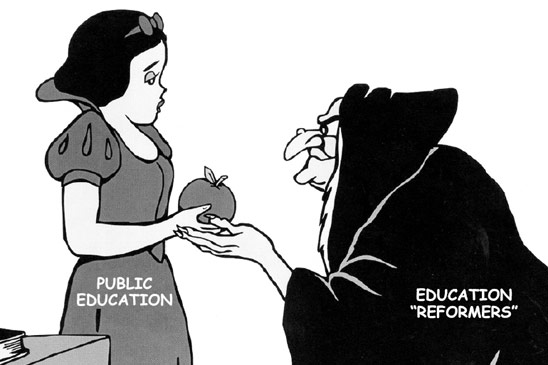A Fairy Tale Reform

Once upon a time, there was much unemployment, poverty, and homelessness across our land. Leaders tried one thing after another to end these grim conditions. Nothing worked.
In the midst of these bad times, however, a small group of educators, upset over what our youth were learning in high schools decided to take action.
Schools were dull places. Students listened to teachers, read books, and took exams. Schools were supposed to prepare students for life but much of what they studied they forgot after graduating. Worse yet, what they had learned in school did not prepare them to face the problems of life, think clearly, be creative, or fulfill their civic duties. Complaints to school officials got the same answer repeatedly: little could be done because college entrance requirements determined what courses students took in high school.
So to give high schools the freedom to try new ways of schooling in a democracy, a small band of reformers convinced the best universities to waive their admission requirements and accept graduates from high schools that designed new programs.
Dozens of schools joined the experiment. Teachers, administrators, parents, and students created new courses and ways of teaching teenagers to become active members of the community and still attend college. For eight years, these schools educated students and universities admitted their graduates. And then a war came and the experiment ended. After years passed, few could recall what these schools and colleges did.
A fairy tale? Nope.
Between 1933-1941, thirty high schools in the country and over 300 universities and colleges joined the experiment sponsored by the Progressive Education Association.
Called “The Eight Year Study,” each high school decided for itself what curricula, schedules, and class sizes would be. There were no college admission requirements or must-take tests. Old lesson plans were scrapped. One school sent classes into the West Virginia coal region to study unions. Science, history, art, and math were often combined in projects that students and teachers planned together.
Needless to say, there were stumbles also. A few principals blocked the experiment. Some school faculties divided into warring factions.
While there was much variation among the schools, there were also common elements. Many of the large public high schools (of the 30, fifteen were private) created small schools within the larger one. Principals increased the authority of teachers to design and steer the program; teachers crossed departmental boundaries and created a core curriculum (math/science and English/social A Fairy Tale Reform | Larry Cuban on School Reform and Classroom Practice:


